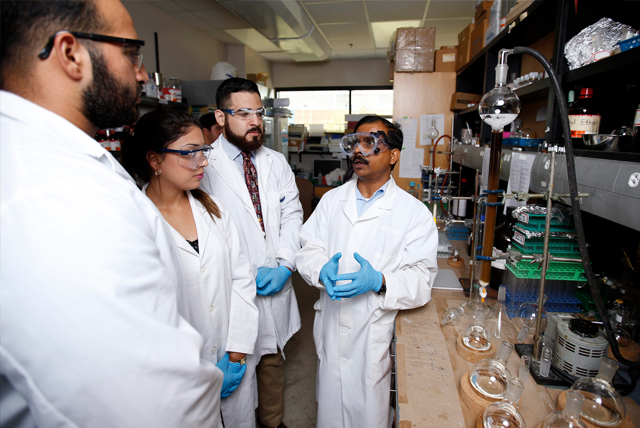Phytochemical Investigation of Magnolia Grandiflora Green Seed Cones: Analytical and Phytoceutical Studies
© 2019 the authors. Published under Creative Commons Attribution License. Original published version available at http://doi.org/10.1002/fsn3.1016.
Abstract
Phytochemicals are inevitable part of human civilization. It is impossible to say exactly when menfolk started to take plant portions to cure various diseases. Phytochemical investigation of diethyl ether and ethanol extracts of Magnolia grandiflora green seed cones has been carried out. Extraction, isolation, and identification of the phytochemicals were carried out. Structures were determined by various analytical methods including extensive nuclear magnetic resonance, gas chromatography‐mass spectroscopy, and X‐ray crystallographic analyses. Structures of the three compounds viz. 5,5′‐diallyl‐[1,1′‐biphenyl]‐2,2′‐diol (I), 3′,5‐diallyl‐[1,1′‐biphenyl]‐2,4′‐diol (II), and (3S,3aS,8S,9aS,10aR,10bS,E)‐8‐hydroxy‐3,6,9a‐trimethyl‐3a,4,5,8,9,9a,10a,10b‐octahydrooxireno[2′,3′:9,10]cyclodeca[1,2‐b]furan‐2(3H)‐one (III) were confirmed by X‐ray crystallographic analysis. GS‐MS studies of the isolated oil, eluted with hexanes, revealed the presence of eight compounds including two highly bio‐privileged molecules 5,5′‐diallyl‐2′‐methoxy‐[1,1′‐biphenyl]‐2‐ol (IV) and 1‐(4‐isopropylbenzyl)‐1,3‐dihydro‐2H‐benzo[d]imidazol‐2‐one (V). The druggability of the five compounds has also been determined by in silico studies. The isolated compounds and/or their semi‐synthetic products may find application in natural drug development research.


